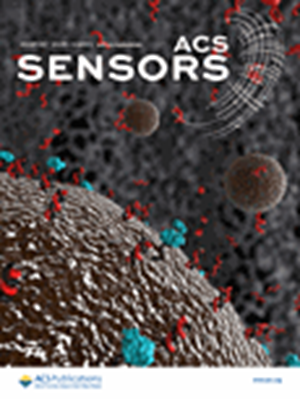Tannic Acid-Enabled Antioxidant and Stretchable MXene/Silk Strain Sensors for Diving Training Healthcare
IF 9.1
1区 化学
Q1 CHEMISTRY, ANALYTICAL
引用次数: 0
Abstract
MXene-based conductive hydrogels hold significant promise as epidermal sensors, yet their susceptibility to oxidation represents a formidable limitation. This study addresses this challenge by incorporating MXene into a tannic acid (TA) cross-linked silk fibroin matrix. The resulting conductive hydrogel (denoted as e-dive) exhibits favorable characteristics such as adjustable mechanical properties, self-healing capabilities (both mechanically and electrically), and strong underwater adhesion. The existence of a percolation network of MXene within the nanocomposites guarantees good electrical conductivity. Importantly, the surface interaction of MXene nanosheets with the hydrophobic moiety from TA substantially reduced moisture and oxygen interactions with MXene, thereby effectively mitigating MXene oxidation within hydrogel matrices. This preservation of the electrical characteristics ensures prolonged functional stability. Furthermore, the e-dive demonstrates inherent antibacterial properties, making it suitable for use in underwater environments where bacterial contamination is a concern. The utilization of this advanced e-dive system extends to the correction of diving postures and the facilitation of underwater healthcare and security alerts. Our study presents a robust methodology for enhancing the stability of MXene-based conductive hydrogel electronics, thereby expanding their scope of potential applications.

用于潜水训练保健的单宁酸抗氧化剂和可伸缩 MXene/Silk 应变传感器
基于 MXene 的导电水凝胶很有希望成为表皮传感器,但其易氧化性是一个巨大的局限。本研究将 MXene 与单宁酸(TA)交联的蚕丝纤维素基质结合,从而解决了这一难题。由此产生的导电水凝胶(称为 e-dive)具有可调节的机械性能、自愈合能力(机械和电气性能)以及强大的水下附着力等有利特性。纳米复合材料中存在的 MXene 渗滤网络保证了良好的导电性。重要的是,MXene 纳米片材与 TA 疏水分子的表面相互作用大大减少了水分和氧气与 MXene 的相互作用,从而有效减轻了 MXene 在水凝胶基质中的氧化。这种电特性的保持确保了长期的功能稳定性。此外,e-dive 还具有固有的抗菌特性,因此适合用于担心细菌污染的水下环境。这种先进的电子潜水系统还可用于纠正潜水姿势、促进水下医疗保健和安全警报。我们的研究提出了一种增强基于 MXene 的导电水凝胶电子器件稳定性的可靠方法,从而扩大了其潜在的应用范围。
本文章由计算机程序翻译,如有差异,请以英文原文为准。
求助全文
约1分钟内获得全文
求助全文
来源期刊

ACS Sensors
Chemical Engineering-Bioengineering
CiteScore
14.50
自引率
3.40%
发文量
372
期刊介绍:
ACS Sensors is a peer-reviewed research journal that focuses on the dissemination of new and original knowledge in the field of sensor science, particularly those that selectively sense chemical or biological species or processes. The journal covers a broad range of topics, including but not limited to biosensors, chemical sensors, gas sensors, intracellular sensors, single molecule sensors, cell chips, and microfluidic devices. It aims to publish articles that address conceptual advances in sensing technology applicable to various types of analytes or application papers that report on the use of existing sensing concepts in new ways or for new analytes.
文献相关原料
公司名称
产品信息
阿拉丁
Gelatin
阿拉丁
Lysozyme (LZM)
阿拉丁
tannic acid
阿拉丁
Dopamine (DOPA)
阿拉丁
Levodopa (L-DOPA)
阿拉丁
Epigallocatechin gallate (EGCG)
阿拉丁
Gallic acid (GA)
阿拉丁
LiF
阿拉丁
LiBr
 求助内容:
求助内容: 应助结果提醒方式:
应助结果提醒方式:


